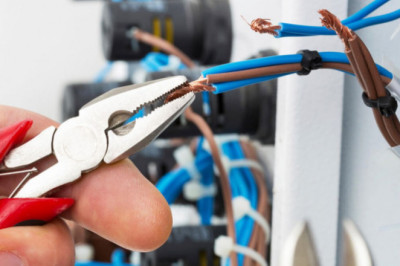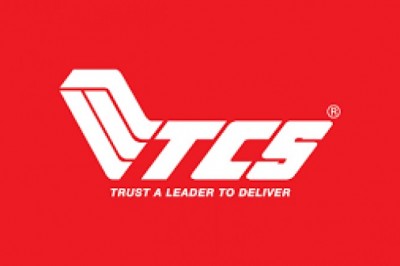views

Polyalkylene Glycol Market
Polyalkylene Glycol market size is forecast to reach US$457.1 million by 2027, after growing at a CAGR of 5.5% during 2022-2027. Polyalkylene glycol base oil is known as polyglycols or PAGs which is formed by reacting an alcohol with one or more alkylene oxides (Polypropylene Glycol and Polyethylene Glycol). Polyalkylene glycols are the base oil belonging to group V which are widely preferred in the development of synthetic lubricants. The growing preference for lubricants among different industries such as automotive, metalworking, textile, food & beverage is driving the market for polyalkylene glycols during the forecast period. Polyalkylene glycol-based lubricants offer superior performance and optimum safety. They can withstand elevated rpm, high temperatures, and normal shock loading among others. The growing industrialization in emerging economies such as India, China, Indonesia, and South Korea among others is positively driving the demand for synthetic lubricants which is further driving the demand for polyalkylene glycols. According to Mosil Lubricants Ltd, approximately 41 MMT (million metric tonnes) of lubricants are produced globally every year.
Impact of Covid-19
The COVID-19 outbreak led to major economic problems and challenges for the oil & gas and industries globally. According to the International Monetary Fund (IMF), the global GDP growth declined by 3.5% owing to the economic impact of COVID-19. Governments all across the globe announced strict measures to slow the spread of the coronavirus and only the production of essential commodities was allowed, which impacted the non-essential commodity industries, thereby impacting the production of polyalkylene glycols. However, economic. The shutdown in manufacturing facilities and the halt in transportation activities also impacted the global demand for lubricants and further impacted PAG market globally. However, the market is shown a positive trend in 2021 due to the resume in manufacturing facilities in Asia Pacific region.
Report Coverage
The “Polyalkylene Glycol Market Report – Forecast (2022-2027)”, by IndustryARC, covers an in-depth analysis of the following segments of the Polyalkylene Glycol industry.
By Type: Grease, Anti-seize Pastes, and Oils
By lubricants Grade: Polyalkylene Glycol Grade 32, Polyalkylene Glycol Grade 46, Polyalkylene Glycol Grade 68, Polyalkylene Glycol Grade 100, and others
By Solubility: Oil soluble, mineral soluble, and water-soluble
By Application: Lubricants [Gear Lubricants, Refrigeration Oil, Textile Lubricants, Compressor Lubricants, Plastic Lubricants, Metalworking Lubricants, Hydraulic Fluids, Food Grade Lubricants, Others], Polyurethane Foams [Rigid Foam, and Flexible Foam], Surface Active Agents [Non-ionic Surfactants, Anionic Surfactants, Cationic Surfactants, and Others], Personal Care [Skin Care [Creams, Lotions, Moisturizers, and Others], Oral Care, Hair Care, Perfume & Deodorants], Pharmaceutical, and Others
By Geography: North America (USA, Canada, and Mexico), Europe (UK, France, Germany, Italy, Spain, Russia, Netherlands, Belgium, and Rest of Europe), Asia Pacific (China, Japan, India, South Korea, Australia, and New Zealand, and Rest of APAC), South America (Brazil, Argentina, Colombia, Chile, Rest of South America), and Rest of the world (Middle East (Saudi Arabia, UAE, Israel, and Rest of Middle East), and Africa (South Africa, Nigeria, and Rest of Africa).
Key Takeaways
- The Asia Pacific dominated the polyalkylene glycol market in the year 2021. One of the key drivers driving the market is the increasing use of polyalkylene glycol in the lubricants industry.
- The growing production and demand for synthetic-based lubricants in the automotive industry are propelling the market growth for PAG base oil. Approximately 24% of synthetic lubricants are manufactured from polyalkylene glycols as base oil.
- However, fluctuating oil prices along with the high price of polyalkylene glycols compared to conventional mineral oils are likely to hamper the market growth during the forecast period.
Polyalkylene Glycol Market Segment Analysis – By Solubility
The water-soluble ployalkylene glycols segment held the largest share in 2021 and is expected to grow at a CAGR of 6.0% by 2027. The major companies such as Dow, BASF, and Clariant are majorly focusing on water-soluble PGA oils. Water-soluble polyalkylene glycol is derived from completely renewable feedstock. It reduces greenhouse gas emissions by approx. 80% as compared to traditional polyalkylene glycol (PAG). They are biodegradable in nature and have low eco-toxicity compared to oil soluble. Water-soluble PAG oil offers various properties such as high thermal stability, high shear stability, high viscosity, and low volatility making it ideal for high-temperature lubrication. They are used for various applications such as metalworking fluids, and water-based hydraulic fluids formulations among others. Hence the growing demand for metalworking fluids is driving the demand for water-soluble PAG. According to World Steel Organization, the total crude steel production in North America reached 108.3 million tons in 2021, an increase of 17.8% as compared to 2020. Likewise, crude steel production in South America reached up to 42.1 million tons in 2021, representing a growth of 20.7% in comparison to 2020.
Polyalkylene Glycol Market Segment Analysis - By Application
The Lubricants segment held the largest share with 84% in the polyalkylene glycol market in 2021 and is anticipated to grow at a CAGR of 5.7% during the forecast period 2022-2027. Polyalkylene glycols (PAGs) are used in the production of different types of lubricants such as gear lubricants, textile lubricants, refrigeration oils, compressor lubricants, and others. The PAG offers various properties such as high viscosity indexes, hydrolytic stability, and excellent control of deposits which makes them suitable for the production of lubricants. The new advancements in lubricants technology and expansion of lubricant manufacturers are supporting the market growth for polyalkylene glycols during the forecast period. For instance, in August 2020, Idemitsu Kosan Company, Ltd., a market leader in the production of polyalkylene glycol lubricants, started its new plant in China for the production of lubricants. The plant have a capacity of producing 120,000 kilo litre of lubricants annually. In October 2020, The BPCL company also launched two new lubricants namely Mak TitaniumCK4, and Mak BlazeSynth, to its product portfolio.
Polyalkylene Glycol Market Segment Analysis – By Geography
The Asia Pacific region dominated the polyalkylene glycol market in terms of revenue with a share of 60% in 2021 and is projected to dominate the market during the forecast period (2022-2026). The presence of key lubricant manufacturers including BP Plc (Castrol), China National Petroleum Corporation, China Petroleum & Chemical Corporation, ExxonMobil Corporation, and Royal Dutch Shell Plc are driving the market growth for polyalkylene glycols in the Asia Pacific region. The growing production of passenger vehicles in developing nations such as India and China is supporting the market growth during the forecast period. According to the International Organization of Motor Vehicle Manufacturers (OICA), the total automobile production in China reached 2,60,82,220 units in 2021, an increase from 2,52,25,242 units in 2020, and 2,57,20,665 units in 2019 respectively. Further, the increasing investments among lubricants manufacturers are also boosting the market growth during the forecast period. In June 2021, IOCL signed an MOU for "Investment Promotion" between the Government of Gujarat and IndianOil for setting up a new Petrochemical and Lube Integration (LuPech) Project and Acrylics/Oxo Alcohol Projects in Gujarat.
Polyalkylene Glycol Market Drivers
Growing use of polyalkylene glycol in lubricants application
Polyalkylene Glycol is used as a base oil for lubricants such as gear lubricants, metalworking lubricants, refrigeration oil, and hydraulic fluids, among others because it is ideal for metal-on-metal applications with operating temperatures ranging from -40°C to 200°C. They are also employed at high temperatures where elastomeric compatibility and thermal stability are required. The global players operating in lubricants production are adopting synthetic base oils for developing high-performance lubricants for different end-use industries such as automotive, textile, food & beverage among others supporting the market growth for polyalkylene glycol. The top lubricants companies such as Shell, Castrol, Cargill, and Exxon among others are developing PAG-based hydraulic and gear lubricants. In October 2020, Shell Plc expanded its lubricants business and added some Polyalkylene Glycol (PAG)-Based Fire-Resistant Fluids to its product portfolio. These products are designed to provide outstanding performance in extreme operating conditions among end-use industries.
Growing demand from Metallurgy Industry
Metalworking fluids employ polyalkylene glycol during the manufacturing process, which is largely utilized in the metallurgy industry to provide lubrication and cooling during the machining and shaping of metals such as iron, aluminum, manganese, and others. They are most commonly used in metal cutting tools to reduce heat and friction between the cutting tool and the workpiece. The growing automotive industry along with construction and manufacturing industries is driving the demand for metalworking fluids. According to the International Organization of Motor Vehicle Manufacturers (OICA), the total automobile production in the U.S including cars and commercial vehicles reached 91,67,214 units in 2021, an increase of 4% in comparison to 2020. The increasing mining activities are also boosting the market for metalworking fluids, according to the facts published by the United States Geological Survey (USGS), the global aluminum production was 65,100 in 2020 and reached approximately 68,000 thousand metric tons in 2021, an increase of 4.4% compared to 2021.
Polyalkylene Glycol Market Challenges
Availability of substitute products in the market
The polyalkylene glycol has several substitutes such as polyalphaolefin (PAO), synthetic esters, ionic fluids, and more. These substitutes have similar chemical properties, performance, and other similar factors such as temperature range, viscosity, and more, which are restricting the polyalkylene glycol market growth. Polyalphaolefin (PAO) is a widely used substitute for the manufacturing of lubricants. Polyalphaolefin has superior properties in comparison with polyalkylene glycol such as mineral oil solubility, only some of the mineral oils are soluble in polyalkylene glycol, while polyalphaolefin is fully soluble in mineral oils. The polyalkylene glycol rolling wear property is weaker when compared with polyalphaolefin. Moreover, when comparing the price aspect the average prices of polyalkylene glycol ranges from approximately US$2,800 to even higher. While the average price of polyalphaolefin ranges from US$2,500 to US$3,000 per metric ton.












